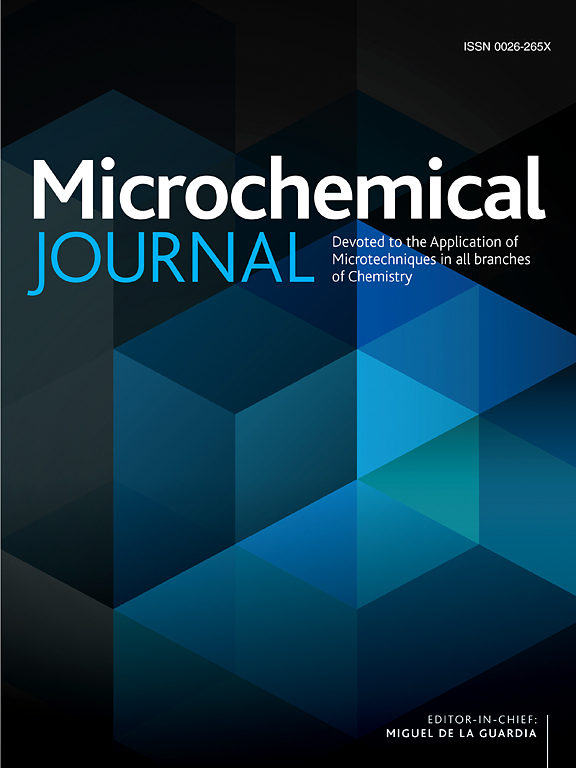利用总离子谱和机器学习对可燃液体残留物进行智能自动表征
IF 4.9
2区 化学
Q1 CHEMISTRY, ANALYTICAL
引用次数: 0
摘要
可燃液体残留物 (ILR) 的鉴定和分类是火灾调查中最具挑战性的步骤之一。传统上,根据 ASTM E1618 准则使用 GC-MS 分析火灾残留物样本,通过与参考样本进行色谱模式比较来确定 ILR,并根据 ASTM 等级进行分类。这项复杂且带有部分主观性的任务在很大程度上依赖于经验丰富的分析师,无法实现自动化。本研究旨在提供基于总离子谱 (TIS) 并结合机器学习 (ML) 算法的自动数据分类替代方法。我们评估并比较了活性炭带(ACS 样品)的热解吸 ILR 和不同火灾残骸样品的直接顶空分析,以开发自动分辨不同 ILR 的方法。我们采用了层次聚类分析(HCA)和有监督的 ML 算法,如线性判别分析(LDA)、支持向量机(SVM)和随机森林(RF)。样本最初倾向于根据是否存在 ILR 进行聚类,然后再根据 ILR 的类型进行聚类。测试了三个数据集:(1)ILRs 存在/不存在;(2)ILR 分类;(3)两者的组合。对于 ACS 样品,所有数据集的分类准确率都达到了 100%。对于直接顶空分析,当使用三种算法时,数据集(1)的准确率为 100%。使用数据集(2)和(3)的模型的准确率低于 100%。使用 SVM 模型创建了一个自动分辨 ACS 样品的网络应用原型。ML 算法的应用证明了所开发方法作为传统 ASTM 方法补充的有效性。这些方法为 ILR 自动化分类提供了巨大的潜力,因此对专家解释火灾残骸数据非常有用。本文章由计算机程序翻译,如有差异,请以英文原文为准。

Intelligent and automatic characterization of ignitable liquid residues by using total ion spectrum and machine learning
The identification and classification of ignitable liquid residues (ILRs) are among the most challenging steps in a fire investigation. Traditionally, fire debris samples are analyzed by GC–MS according to ASTM E1618 guidelines, where ILRs are determined via chromatographic pattern comparison with reference samples and classified according to ASTM classes. This complex and partially subjective task relies heavily on an experienced analyst and does not lend itself to automation. This study aims to provide alternative methods for the automatic data classification based on the total ion spectrum (TIS) combined with machine learning (ML) algorithms. We evaluated and compared thermal desorption of ILRs from activated charcoal strips (ACS samples) and direct headspace analysis of different fire debris samples to develop automated discrimination of different ILRs. Hierarchical cluster analysis (HCA) and supervised ML algorithms like linear discriminant analysis (LDA), support vector machines (SVM), and random forest (RF) were employed. The samples tended to initially cluster according to the presence/absence of ILRs followed by the type of ILR. Three datasets were tested (1) ILRs presence/absence, (2) ILR classification, and (3) combination of both. For ACS samples, all the datasets achieved 100% classification accuracies. For direct headspace analysis, dataset (1) resulted in 100% accuracies when the three algorithms were used. Models using dataset (2) and (3) achieved less than 100%. A prototype web-based application for the automatized discrimination of ACS samples was created using the SVM model. The application of ML algorithms demonstrated the effectiveness of the developed methods as supplementary to traditional ASTM method. These methods provide significant potential for automating the classification of ILRs therefore they can be useful to the experts in interpreting fire debris data.
求助全文
通过发布文献求助,成功后即可免费获取论文全文。
去求助
来源期刊

Microchemical Journal
化学-分析化学
CiteScore
8.70
自引率
8.30%
发文量
1131
审稿时长
1.9 months
期刊介绍:
The Microchemical Journal is a peer reviewed journal devoted to all aspects and phases of analytical chemistry and chemical analysis. The Microchemical Journal publishes articles which are at the forefront of modern analytical chemistry and cover innovations in the techniques to the finest possible limits. This includes fundamental aspects, instrumentation, new developments, innovative and novel methods and applications including environmental and clinical field.
Traditional classical analytical methods such as spectrophotometry and titrimetry as well as established instrumentation methods such as flame and graphite furnace atomic absorption spectrometry, gas chromatography, and modified glassy or carbon electrode electrochemical methods will be considered, provided they show significant improvements and novelty compared to the established methods.
 求助内容:
求助内容: 应助结果提醒方式:
应助结果提醒方式:


